News
…
News

How virtual health tools are making hospital rooms ‘smart’
In an effort to reduce patient harm and support staff efficiency, Virtua Health is modernizing the hospital room with virtual health tools, such as cameras and sensors.
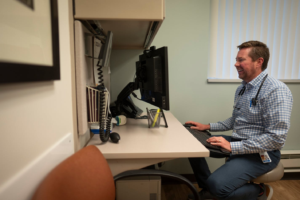
Extend, don’t reverse, virtual health care options
Elon Musk, the nation’s cost-cutter in chief, should consider telehealth’s return on investment, not just its price tag.
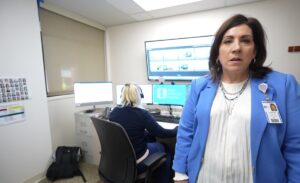
Akron Children’s is using ‘virtual’ nurses. Here’s what that means for patients:
For some patients staying at Akron Children’s Hospital and their families, an additional member of the care team is now available to provide updates and ask questions through their in-room monitors.

Unifying telemedicine efforts can help health systems succeed with virtual care
That’s the message Teladoc Health’s Scott Wilson and two colleagues from Valley Health System will be delivering at HIMSS25. Wilson offers a preview of the session, with tips for realizing value from telehealth.

Understanding the Legal Pitfalls of Virtual Second Opinions: What You Need to Know
Virtual medical second opinion (VSO) programs continue to roll out across the country, delivering expert recommendations to better help patients’ diagnoses or treatment options. These VSO programs can offer immense value to patients and their local treating doctors by leveraging the deep expertise of specialists and exporting it to rural communities and geographies that lack such sub-specialty expertise.

Why are pharma, medical device and DTx companies investing in telemedicine?
One virtual care CEO says telehealth is improving care for rare and complex diseases, helping compounding pharmacists – and continually improving with artificial intelligence.

AI Virtual Therapists Could Improve Mental Health Care, Studies Find
New research shows that artificial intelligence (AI) and virtual reality (VR) goggles could revolutionize therapy — helping patients overcome addiction and receive unbiased care.

Older adults’ digital health use varies by race, other factors
New research reveals that older adults use various digital health tools, including patient portals and telehealth platforms, but demographic factors shape utilization.

Tulane launches 24/7 virtual mental health support for students
As part of its ongoing commitment to student mental health and well-being, Tulane is launching a new telehealth service that will offer behavioral health care as well as crisis management and mental health coaching for students.

Telehealth helps people get health care, but access may soon be in limbo
Virtual doctor visits have been a game changer for improving access, especially in rural areas

Congress Extends Telehealth Flexibilities for Two More Years
With only two weeks remaining in the year, Congress appears poised to pass a government funding deal (the “Further Continuing Appropriations and Disaster Relief Supplemental Appropriations Act, 2025”) that includes a welcome holiday gift for health care providers and patients – an expansive health care package that would extend certain telehealth flexibilities promulgated during the COVID-19 public health emergency (“PHE”) for an additional two years. The extended telehealth flexibilities were originally set to expire on December 31, 2024. This extension would generally allow providers to continue to serve Medicare patients via telehealth consistent with the current practices.

Report shows overwhelming doctor support for virtual care
Physicians said in this year’s Doximity survey that telemedicine tools have helped them improve disease management and patient access. They also said adherence to treatment plans, patient outcomes and productivity are up.

Tele-ultrasound Offers a Virtual Lifeline for High-Risk Pregnancies in Rural New Mexico
The facts, by now, are impossible to ignore. According to the CDC’s latest findings, 80% of pregnancy-related deaths in the U.S. are preventable [1]. Among the contributing factors is the rising number of maternity care deserts across the United States – counties in which access to the full range of maternity health care services is limited or absent. A 2022 report by March of Dimes confirms that 5% of counties nationwide had less maternity access than two years prior, affecting up to 6.9 million women and almost 500,000 births in the U.S.

Virtual acute care at home cuts length of hospital stay
A study shows that an at-home care model incorporating virtual care, remote patient monitoring and urgent care was linked to shorter hospital stays than standard inpatient care.

Aged care nursing in the digital future
Digital technology can better assist nurses to manage end of life care in residential aged care facilities but ensuring its impact requires better tools, training, and ongoing support, a new study has found.

How digital health is powering population health strategies
Healthcare leaders discuss how digital health technologies are boosting population health efforts by enhancing access and outcomes, helping them achieve value-based care goals.

Modernizing acute care: the economic impact of bedside telehealth
Research reveals three main benefits for healthcare organizations offering inpatient virtual care programs.

VA plans to end telehealth copays and fund virtual care access in rural areas
The agency is proposing telehealth access grants to establish fixed, secure environments outfitted with reliable internet and secure video that connect veterans hobbled by the digital divide to health services.

Does more virtual care mean more low-value care? Study suggests no
Before 2024 ends, Congress will decide whether to keep or change rules about telehealth, or let them expire. And even though the decision will focus on Medicare’s payment for virtual patient care, it will likely impact telehealth access for people with other kinds of health insurance too.

Digital health has evolved rapidly, but medical insurance hasn’t kept up
The benefits of connected care and remote patient monitoring have catapulted digital health into mainstream medical offerings, but issues of reimbursement and insurance technicalities are hindering adoption.

Why rural telehealth alone can’t fix care access problems
Without fixing workforce shortages and social determinants issues, rural telehealth’s impact on care access will be limited.

Easing Patient Fears of Radiation Treatment, Via Virtual Reality
For a patient facing radiation therapy for cancer, the process is filled with unknowns. They might wonder about the radiation itself—will it burn? Then there’s the face mask for head and neck cancer patients—will it be tolerable? And those radiation placement tattoos— will they hurt? The uncertainty can be overwhelming for someone already dealing with fear, anxiety, or anger related to their diagnosis and other treatments.

Health care consumers face affordability crisis, seeking tech solutions
Nearly 3 in 10 consumers skip, delay or stop care because they can’t afford it.

Affordability, GenAI top-of-mind for healthcare consumers
GenAI holds promise for ameliorating patient navigation and affordability issues that get in the way of patient care access, healthcare consumers say.
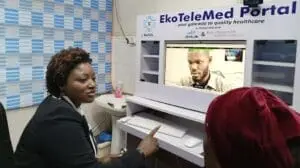
How Mobihealth is driving a telemedicine revolution in Africa
As a child growing up in northern Nigeria, Dr. Funmi Adewara experienced a severe hand injury that required multiple surgeries and frequent hospital visits.
These visits exposed her to the harsh realities of the country’s healthcare system. “I remember sitting in overcrowded waiting rooms, watching doctors stretched thin, unable to meet the needs of so many patients,” Adewara recalls.

Tele-Emergency Care for Veterans Now Available Nationwide
The US Department of Veterans Affairs has announced nationwide availability of tele-emergency care (tele-EC), providing timely virtual emergency care options to veterans and improving access to world-class care.

Can AI power progress with remote patient monitoring technology?
An expert discusses the combination of RPM and artificial intelligence, with examples of how tools are being developed and used today to improve patient access and expand virtual care.

How Hippo Virtual Care™ Can Help Reverse the Physician Exodus
How Hippo Virtual Care™ Can Help Reverse the Physician Exodus The shortage of physicians that was exacerbated by the COVID-19 pandemic is showing no signs

Virtual care during fall and winter
KeyCare CMO Dr. Carrie Nelson discusses how virtual care can improve acute and chronic conditions while easing clinical workload and improving patient access, especially for seniors during winter.

Women are demanding better menopause care. Online platforms are heeding the call.
When Jodi Miller was 49, she started to experience mood swings, hot flashes, weight gain, and adult acne — some of the many symptoms of menopause.

Will telemedicine stagnate without regulatory reform?
Consultant Matt Wolf says that, despite telehealth staying in the spotlight since the pandemic, it faces some setbacks that could limit lasting success. Incentivizing better patient outcomes could help virtual care make more economic sense.

Americans With Heart, Cancer Conditions Embrace Virtual Second Opinions
CLEVELAND–(BUSINESS WIRE)–New data from The Clinic by Cleveland Clinic, a leading provider of virtual second opinions (VSOs), reveals regional and condition-specific trends from patients using VSOs to apply world-class medical expertise to diagnoses and treatment plans.

Telehealth delivery varies widely across physician age groups, practice areas
Telehealth delivery varies widely across physician age groups, practice areas By Nick Thomas Telehealth provision, though remaining a significant aspect of medical delivery since the start

The Vitamin Shoppe expands telehealth offering with testosterone replacement therapy
The Vitamin Shoppe expands telehealth offering with testosterone replacement therapy By Jessica Hagen New Jersey-based nutritional supplements supplier The Vitamin Shoppe announced it is expanding its recently launched Whole Health

Telemedicine on the rise, but rural communities are concerned about privacy
DENVER (KDVR) — Telemedicine has been used for decades, however, it exploded during the peak of the COVID-19 pandemic. Now, experts said it is only going to expand.

Telehealth utilization trends vary across specialties
A new study highlights the variability of telehealth utilization by specialty, with some specialties like mental healthcare continuing to experience high telehealth use.

AI-powered RPM boosts care for chronic conditions while saving costs
Artificial intelligence is helping improve remote patient monitoring technology, with especially promising applications focused on diabetes. One CEO discusses the quality and cost-efficiency promise of “the next generation of remote care.”

The impact of AI and telemedicine on behavioral health services
“Telehealth already has proven its value in increasing access to care – but paired with effective, responsible AI usage, it holds the promise of more efficient, effective and personalized mental health services,” a telepsychiatry provider CEO says.

Virtual Care is the Future. The Path Goes Through Nursing.
The top clinical leaders in the nation agree that virtual nursing is the next step in care delivery. Here’s how they are advancing their programs.

The future of medicine: How telehealth is changing healthcare
Yuval Noah Harari, author of the bestseller Sapiens, aptly noted, “Pandemics press the fast forward button.” The COVID-19 pandemic expedited the adoption of teleconsultation, transforming it from a novelty to a necessity.

Doctor-On-Demand App Development: The Future of Healthcare Domain
The emergence of doctor-on-demand app development stands as a revolutionary force, shaping the healthcare industry’s future. This innovative healthcare solution connects patients and healthcare providers easily, bringing a paradigm shift that redefines patient-doctor interaction while simultaneously improving accessibility.

The EU AI Act comes into effect
The Act is the world’s first major law for AI implementation and provides regulations for high-risk applications of the technology, including its use in healthcare.

3 nursing trends, from a chief nursing officer’s perspective
As we’re halfway through the year, the nursing field continues to experience significant shifts, marked by the rise of AI, staff shortages and efforts to combat staff burnout.

CMS Advances Virtual Care, Digital Health Coverage in Proposed 2025 PFS
The proposed Physician Fee Schedule includes, among other things, Medicare coverage for care management using telehealth and digital health tools, as well as coverage for some digital therapeutics devices used in behavioral health treatment

Assessing the value of a command center model in large health care delivery systems
Reimagining health system performance through enhanced centralization and coordination

Walmart sells telehealth platform
Walmart Inc. is scaling back in another area of its healthcare operation.

How AI transcription, integrated with telehealth tools, can boost care quality
A CEO who specializes in this combination reveals how artificial intelligence has the ability to help analyze and summarize key virtual care consultation points, detect patterns in patient data to deliver more personalized care, and much more.

Telehealth Declines as AI and In-Person Visits Rise Post-Pandemic
During the pandemic, they were heroes. Now, they’re apparently expendable.
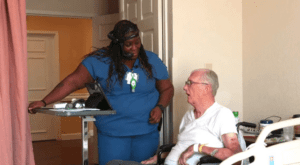
How Hippo Virtual Care™ is Transforming Post-Acute Care
A new partnership with Carpenter Health Network is bringing immediate benefits to providers and patients.

How Hippo Virtual Care™ “Has Revolutionized” Critical Patient Care in Louisiana
After The Carpenter Health Network deployed the Hippo Virtual Care™ platform, the network’s chief medical officer, James Ratliff, MD, called the platform “an absolute differentiator” that brings “an acute solution to an acute problem.”

Amazon combines virtual care clinic with One Medical
Amazon Clinic will become part of One Medical, though it will still provide on-demand virtual care for minor conditions on a pay-per-visit basis.

Publix launches virtual health care service
By filling out an online health questionnaire, customers can seek medical care from a licensed provider with no appointment

Redefining The Fate Of Virtual Care
Last quarter delivered several shocks to the healthcare system, including a series of downturns for virtual care.

Telemedicine, remote monitoring help reduce healthcare costs
In response to tightening profit margins in healthcare, the adoption of telemedicine and remote monitoring technologies is accelerating as a strategic move to cut costs and maintain quality care outside of traditional hospital settings.

How digital preferences define the modern healthcare consumer
In an age of digital evolution and expanding care options, what today’s healthcare consumer wants is changing.

Telehealth evolution: Three opportunities for supporting the success and longevity of virtual care
For telehealth to transcend novelty and become a fully integrated part of healthcare delivery, it needs to focus on reimbursement, accessibility, and patient engagement.

Digital health tech transforms access to pulmonary rehabilitation programs in India
Improving access to care is key in a new partnership introducing digital rehabilitation programs to support patients with long-term conditions in India.

Your next smartwatch could analyze sweat to mine invaluable health data
Over the past few years, scientists have been eyeing sweat as the next breakthrough avenue for wearable devices. So far, the tech hasn’t seen commercialization from the likes of Apple or Samsung, but the work continues.

Reports of telehealth’s death have been greatly exaggerated
Telehealth is collapsing.” “Telehealth is going through a contraction.” “There is a dark cloud hovering over virtual care.”

TeleRheumatology – Virtual care to Veterans with arthritis and rheumatic conditions
An estimated 21% of adults have arthritis

Healthcare’s Next Void to Fill: Digital Primary Care
No matter what form they take, one thing is clear — there is an urgent demand for digital primary care providers to guide patient navigation in the digital health era.

Designing digital health tools starts with end users’ needs
Emily Barey, chief nurse evangelist at Epic and 2024 Changemaker, discusses how building new healthcare technology requires observing the problems users face and gathering a diverse team to help solve them.

Telemedicine, enabled with responsible AI, can improve the patient experience
By using artificial intelligence to analyze patient data and provide targeted recommendations, health systems can build a more intuitive, user-friendly experience that empowers patients to make informed decisions about their care, one expert says.

Accreditation agencies take on telehealth with new virtual care standards
In the early days of the pandemic, as social distancing forced patients out of doctors’ offices, health care organizations scrambled to offer care online. In turn, health care accreditation organizations rushed to tweak their standards, filling a void in best practices for virtual visits.

Cedars-Sinai expands virtual care offering to children, Spanish speakers
The health system’s expanded app, Cedars-Sinai Connect, will allow parents and Spanish-speaking adults to access 24/7 on-demand care.
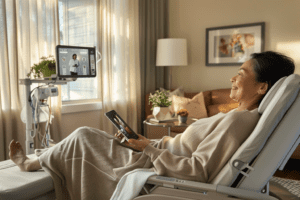
The new frontier of healthcare: Bringing hospital care home
This trend is growing because advances in technology and patient preference are driving the hospital-at-home movement.

Telehealth groups urge DEA to release virtual e-prescribing rules
Citing compliance strains on providers and others, and the need to maintain patient care continuity, more than 200 virtual care stakeholders urged the agency to release its regulatory scheme for the prescribing of controlled substances through telehealth.

How rural America is shaping the future of healthcare
What some call flyover country, I call America’s heartland. It’s the part of the map between the Rocky Mountains and the Great Lakes, in states with more cows than people and roads you can drive for an hour without seeing a gas station.

Models adjusting for geography show racial gaps in telehealth use
Unadjusted research models show high telehealth use among minority race groups during the pandemic, but models that adjust for geography reveal the opposite.

Female, chronically ill patients more likely to use telehealth
Over 40 percent of patients used telehealth in 2022, but certain groups are more likely to use the care modality than others, new research reveals.

Driving the Future of Health
Since 2010, there has been over $100 billion of venture funding invested in digital health companies. Yet despite this growth and the desire from patients and physicians for progress to continue, the health care system still struggles to address the ongoing health care challenges of access, quality, outcomes, affordability and equity, even with the introduction of new digital health tools.

Telehealth in care deserts: Helping to overcome barriers created by location, costs, or social stigma
Both patients and professionals are becoming more comfortable with virtual care, helping improve outcomes when access to traditional, in-person care is inconsistent.

Virtual agents, chatbots can improve care delivery, but trust is critical
Experts emphasized the value of proactive approaches, meaningful interactions and seamless connections to human support while using AI-enabled chatbots in healthcare.

Your health in your hands: the empowering effect of virtual care
The COVID-19 pandemic gave a boost to the virtual world, with many people realizing that they can not only work remotely, but also receive education and health care services by distance.
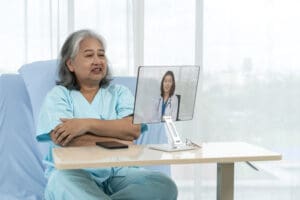
How virtual nursing is increasing nurse satisfaction and transforming patient care
In the midst of the national nurse staffing shortage, nurse recruitment and retention are top priorities for most healthcare industry leaders. In addition to providing hands-on patient care, nurses are tasked with a significant number of administrative tasks, which makes it increasingly important for health systems to develop and deploy innovative care models to better support nurses.

Comprehending the potential of telemedicine to fundamentally reform the way healthcare is delivered now
Digital technologies have changed the way we live, the way we look at life and the way we experience things. It is no surprise that in this age of rapid technological advancement, digital technologies have permeated every facet of our lives, reshaping industries and transforming the way we access services.
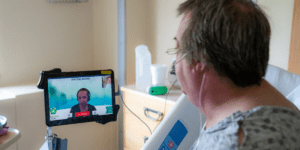
ChristianaCare Virtual Nursing Makes an Innovative Connection
Virtual nursing support helps nurses at the bedside keep their focus on patient care.

The Future of Medicine – Pill or Person?
The Future of Medicine – Pill or Person? Far in the medical future, we imagine amazing tricorder technology and remedies in Star Trek. When you

Some virtual care companies putting patient data at risk, new study finds
Canadian researchers have patient privacy concerns as industry grows post-COVID

Primary, Specialty Care Physicians Favor Telehealth More Than Surgeons
A majority of primary and specialty care physicians believe telehealth and in-person care quality are similar versus only half of surgical specialists.

RPM reduces 30-day readmission rates by 50% at Lee Health
The health system’s medical director will offer more perspective on how remote patient monitoring is helping, including enabling an adherence rate of 80% to daily vitals, at HIMSS24.

Amid Rise in Hypertension-Related Telehealth, Racial Gaps Persist
Hypertension-related telehealth visits rose in 2020, remaining elevated after the pandemic’s peak, but use among Black adults remained lower than among other races.

As virtual care becomes more clinical, there are more rules to follow
Telehealth solutions for employees have been evolving from periphery coaching models, such as Livongo and Cleo, to more virtual care models staffed by physicians, nurses and clinicians.
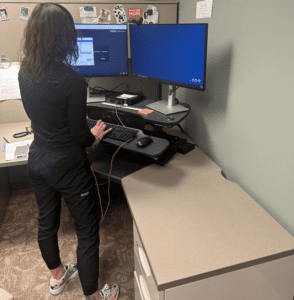
Virtual nursing is a new way to check in with patients
Telemedicine isn’t a new concept in health care. Connecting with your health care provider online is a great way to get care without leaving home, especially when you aren’t feeling your best.

Veterans’ Use of Video-Based Telehealth 2,300% Higher Than Pre-Pandemic
Veterans’ telehealth use skyrocketed during the pandemic, but research shows that in 2023, audio-only visits have dropped while video visit levels remain high.

Cigna’s top healthcare trends for 2024
Cigna is expecting employers to turn their attention to virtual care, social determinants of health and behavioral care in 2024.

Palliative Care via Audio-Only Telehealth Boosts Quality of Life
An audio-only telehealth intervention delivering palliative care to patients with chronic conditions improved quality of life scores, research shows.

Why Telehealth Is Failing
Why Telehealth Is Failing During the early months of the COVID-19 pandemic, millions of patients were introduced to telehealth, as it was often their only

Patient Care, Policy & More: A Look at This Year’s Virtual Care Trends
The telehealth industry held steady on several fronts last year, but experts say 2024 will be different as stakeholders determine the future of virtual care.

More hybrid virtual care and asynchronous telemedicine on the way for 2024
A telehealth expert offers a look at the year ahead, where he also sees more growth in virtual chronic care management and employer-based care.

Embracing the Future: The Revolution of Healthcare Technology
Embracing the Future: The Revolution of Healthcare Technology by Mason Walker Healthcare Technology: A New Era of Possibilities As we edge closer to a future
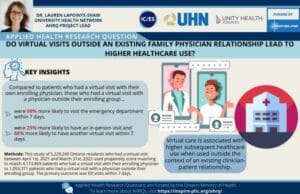
Virtual care works best when patients see their own family doctor, study finds
Compared to patients who had a virtual visit with their own family doctor, those who received virtual care from a doctor outside of their family care team were 66 percent more likely to visit the emergency department within seven days, according to new research.

Psychiatrists’ Telehealth Use ‘Well Above’ Other Specialists
Amid a drop in telehealth use between 2020 and 2022, psychiatrists and other mental health providers continued to use telehealth at above-average rates.

Navigating the Telehealth Surge: Prioritizing Quality and Continuity of Care
By prioritizing patient care and adapting our business models to meet the demands of our patients, we can ensure that the telehealth industry continues to provide meaningful and lasting benefits to all those who need it.

Virtual care – negotiating barriers to adoption offers glimpses of an exciting future
Digital tools and innovative healthcare promise to address pressing healthcare issues if they can satisfy concerns over access, security and affordability.
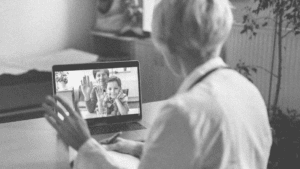
Why your kid’s public school may be replacing counseling with online therapy
As schools cope with shortages of in-person practitioners, however, educators say teletherapy works for many kids.

3 trends in the “medaverse” that critically impact healthcare
The COVID-19 pandemic accelerated the shift to remote patient consultations and health monitoring, leading to the advancement of telehealth delivery.

Telehealth Use Remains High in Mental Health, Infectious Disease Care
Though the overall share of telehealth visits has dropped, it accounts for 37 percent of mental health and 11 percent of infectious disease visits, new data shows.

Surge in virtual care brings increased privacy risks
In September, Costco became the latest retailer to venture into virtual primary care, offering its members $29 telehealth visits, $72 standard lab panels with consult, and $79 virtual therapy visits.

Navigating the path to AI at scale
Dr. Eve Cunningham, an expert in applied technologies and care transformation, previews her panel at the HIMSS AI in Healthcare Forum next month, and talks effective approaches to scaling AI systems for optimal value.
